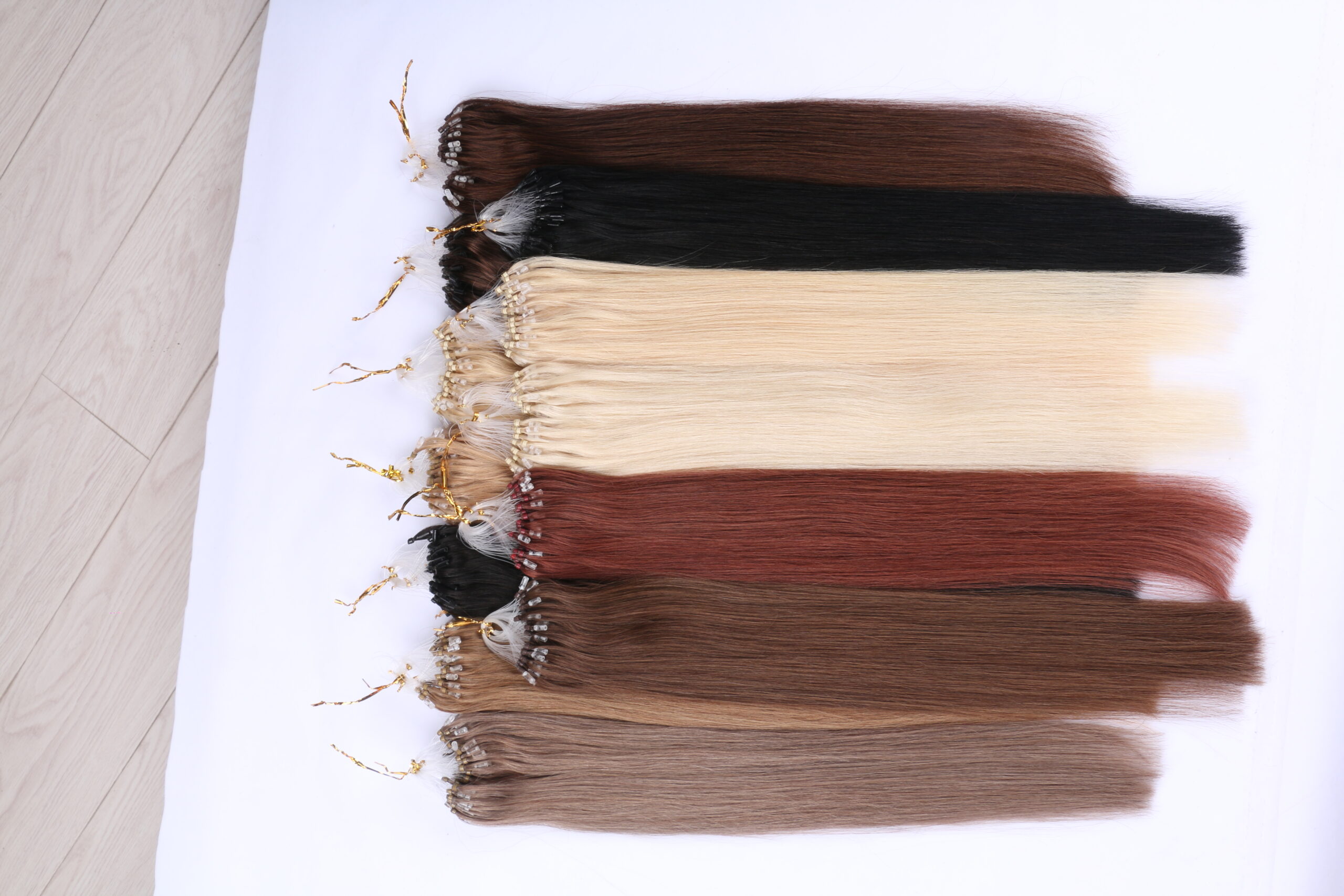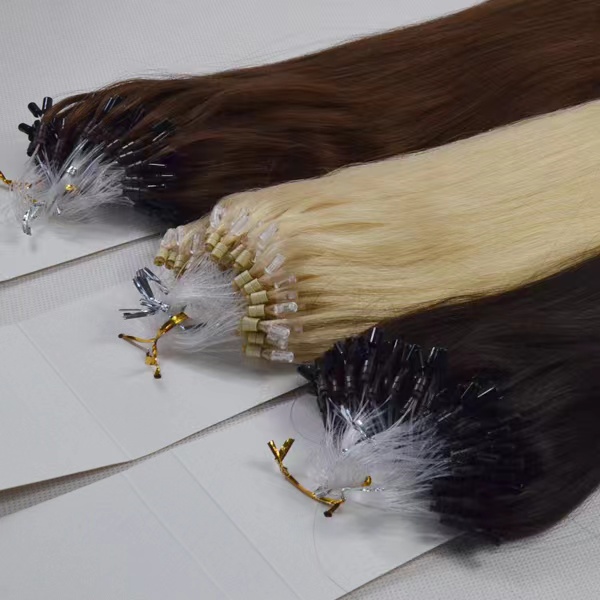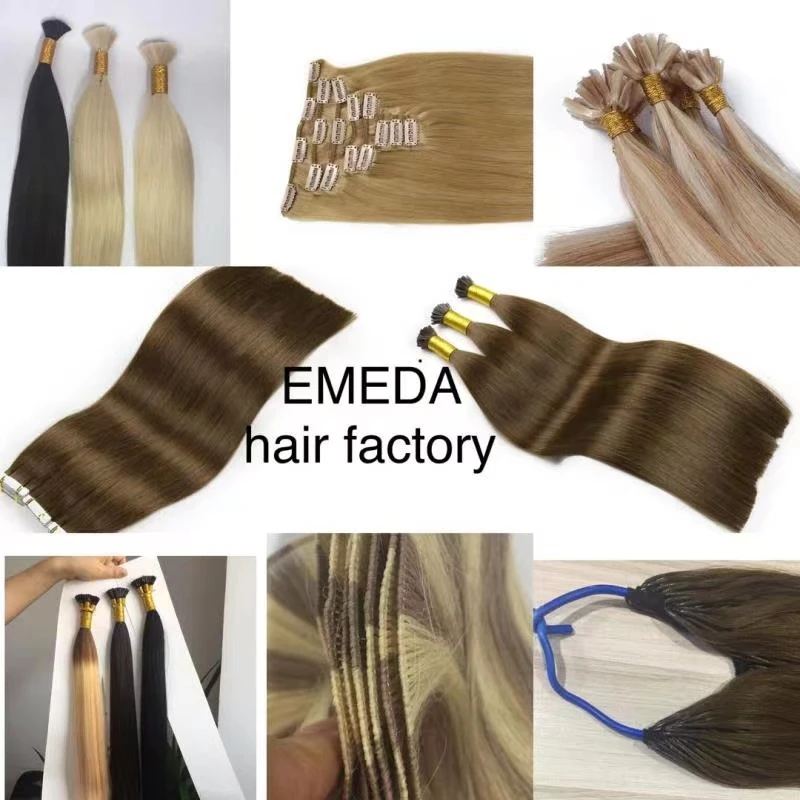
Hair extensions have become a popular trend among individuals looking to add length, volume, or color to their natural hair. Among the various types of hair extensions available, weft hair extensions with microbeads have gained significant attention due to their versatility and natural appearance. This comprehensive article will delve into different aspects of weft hair extensions with microbeads, including their history, application process, benefits, maintenance, potential drawbacks, and comparisons with other types of hair extensions.
The concept of hair extensions is not new. Ancient Egyptians used wigs and extensions made from human hair and dyed wool as far back as 3400 B.C. These early extensions were often used to denote social status and for ceremonial purposes. Over the centuries, hair extensions evolved, incorporating different materials and methods of application.
In the late 20th century, hair extensions became more mainstream, with advancements in technology and techniques making them more accessible and natural-looking. The introduction of synthetic fibers and improved bonding methods paved the way for the development of more sophisticated extension types, including weft hair extensions with microbeads.

Weft hair extensions consist of a curtain-like strip of hair sewn together at the top. These wefts can be made from either human or synthetic hair. Human hair extensions are often preferred for their natural appearance and durability. Wefts can vary in width and length, allowing for customization based on the desired look.
Microbeads, also known as micro rings or micro links, are tiny metal or silicone beads used to attach hair extensions to the natural hair. The beads are small and discreet, making them ideal for creating a seamless blend between the extensions and the natural hair.
Weft hair extensions with microbeads combine these two elements. Small sections of the weft are attached to the natural hair using microbeads, creating a secure and natural-looking result. This method allows for greater flexibility and movement compared to other attachment methods, such as glue or tape.
Before applying weft hair extensions with microbeads, it is essential to prepare the natural hair. This involves washing and drying the hair thoroughly to remove any oils or product buildup. It is also advisable to trim the natural hair to ensure a seamless blend with the extensions.
The next step involves sectioning the natural hair. The hair is divided into small, horizontal sections, starting from the nape of the neck and working upwards. Each section should be thin enough to ensure that the microbeads can hold the weft securely.
Once the hair is sectioned, the wefts are attached using the microbeads. Small sections of the weft are placed against the natural hair, and a microbead is threaded onto both the weft and the natural hair. The bead is then clamped shut using a pair of pliers, securing the weft in place. This process is repeated until all the wefts are attached, creating a natural and voluminous look.
After the wefts are attached, the extensions are blended with the natural hair to ensure a seamless appearance. This may involve trimming the extensions to match the natural hair length and using styling tools to create a cohesive look.
One of the primary benefits of weft hair extensions with microbeads is their natural appearance. The small beads are discreet and blend seamlessly with the natural hair, making it difficult to detect the extensions.
Weft hair extensions with microbeads are highly versatile and can be styled in various ways. They can be curled, straightened, and even colored to match the natural hair, providing endless styling possibilities.
When properly maintained, weft hair extensions with microbeads can last for several months. The microbeads provide a secure attachment, reducing the risk of the extensions slipping or falling out.
Unlike some other methods of attaching hair extensions, such as glue or tape, microbeads do not require the use of harsh chemicals. This reduces the risk of damage to the natural hair, making them a safer option for those looking to add length and volume.
Maintaining weft hair extensions with microbeads is relatively straightforward. Regular washing, conditioning, and brushing are essential to keep the extensions looking their best. Additionally, the microbeads can be repositioned as the natural hair grows, extending the life of the extensions.

Proper washing is crucial to maintaining the quality and longevity of weft hair extensions with microbeads. It is recommended to use sulfate-free shampoos and conditioners to avoid stripping the hair of its natural oils. Gently massaging the scalp and extensions during washing helps to remove dirt and product buildup.
Regular brushing is essential to prevent tangling and matting of the extensions. A wide-tooth comb or a brush designed specifically for hair extensions should be used. Brushing should be done gently, starting from the ends and working upwards to avoid pulling on the microbeads.
While weft hair extensions with microbeads can be styled using heat tools, it is essential to use a heat protectant to minimize damage. Additionally, it is advisable to avoid excessive heat and to use the lowest heat setting possible to maintain the integrity of the extensions.
To prevent tangling and damage while sleeping, it is recommended to tie the hair in a loose braid or ponytail and to use a silk or satin pillowcase. This reduces friction and helps to maintain the smoothness of the extensions.

Weft hair extensions with microbeads can be more expensive initially compared to other types of hair extensions. The cost can vary depending on the quality of the hair, the number of wefts required, and the expertise of the stylist.
The application process for weft hair extensions with microbeads can be time-consuming, often taking several hours to complete. This may be a drawback for individuals with busy schedules.
Regular maintenance appointments are necessary to reposition the microbeads as the natural hair grows. This can add to the overall cost and time commitment associated with these extensions.
Some individuals may experience discomfort or tightness after the initial application of weft hair extensions with microbeads. This usually subsides after a few days as the scalp adjusts to the added weight of the extensions.
While microbeads provide a secure attachment, there is still a risk of slippage, especially if the extensions are not properly maintained. It is essential to follow the recommended care guidelines to minimize this risk.

Clip-in extensions are a popular alternative to weft hair extensions with microbeads. They are easy to apply and remove, making them a convenient option for temporary use. However, they may not provide the same level of natural appearance and security as microbead extensions.
Tape-in extensions involve attaching wefts of hair using adhesive tape. While they offer a natural look and are quicker to apply than microbead extensions, they may require more frequent maintenance and can be more challenging to remove without causing damage to the natural hair.
Fusion extensions use a keratin bond to attach individual strands of hair to the natural hair. This method provides a very natural look and is long-lasting, but it can be time-consuming and expensive to apply. Additionally, the removal process can be more damaging to the natural hair compared to microbead extensions.
Sew-in extensions involve braiding the natural hair into cornrows and sewing the wefts onto the braids. This method provides a secure attachment and can last for several months, but it can be uncomfortable and may cause tension on the scalp.
Weft hair extensions with microbeads offer a versatile and natural-looking solution for individuals looking to enhance their hair. While the initial cost and time commitment may be higher compared to other types of hair extensions, the benefits of a natural appearance, durability, and minimal damage make them a popular choice. Proper maintenance and care are essential to ensure the longevity of these extensions and to minimize the risk of potential drawbacks. By understanding the different aspects of weft hair extensions with microbeads, individuals can make an informed decision and enjoy the many advantages they offer.
Emeda Hair is committed to ethical sourcing practices, ensuring that all hair used in their extensions is obtained in a responsible and transparent manner. Here’s a detailed look at how Emeda Hair maintains its high ethical standards:
Feel Free to contact us for future information or quotation,
Contact: Queena Wang
Tel/whatsapp: +86 18562611506
Email: sales06@emedahair.com

New customization and stock clearance
WhatsApp us